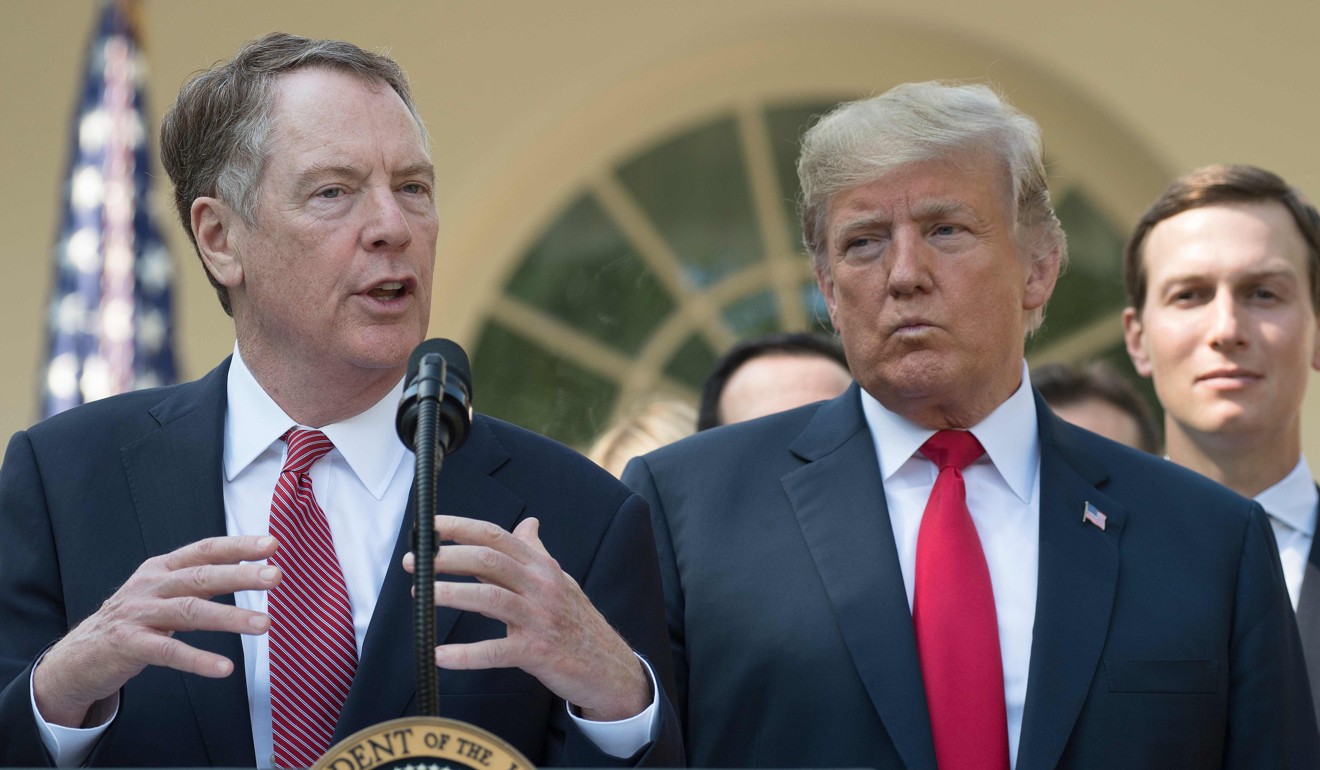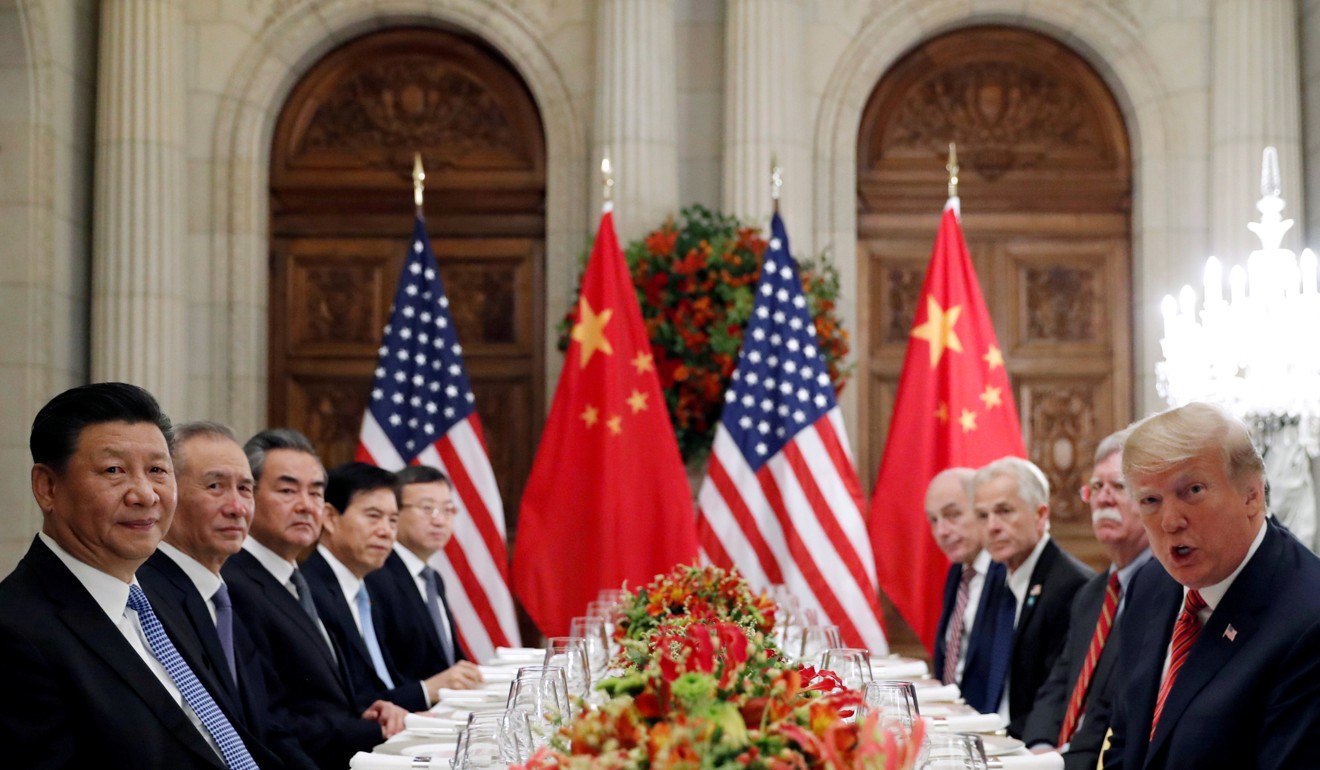
Despite cautious optimism, economic worries hang over US-China trade talks
- Officials and business leaders are hoping that meetings in Beijing spur a continued thaw in relations between the economic superpowers
- No agreement is expected this week, but the meeting is likely to set the stage for higher level talks
This story is published in a content partnership with POLITICO. It was originally reported by Doug Palmer on politico.com on January 6, 2019.
US President Donald Trump took a big gamble in 2018 that the US economy could withstand a trade war with China. Talks this week in Beijing could determine if that bet will pay off.
A US team led by Deputy Trade Representative Jeffrey Gerrish will hold two days of discussions with Chinese officials to try to resolve concerns that prompted Trump to slap duties on US$250 billion worth of Chinese goods.
“We’ll see what happens,” Trump told reporters on Friday when asked about the negotiations. “But I can tell you, China is not doing well now and it puts us in a very strong position. We are doing well.”
No agreement is expected this week, but the meeting is likely to set the stage for higher level talks next week between delegations led by US Trade Representative Robert Lighthizer and Chinese Vice-Premier Liu He.
Officials from both nations expressed cautious optimism going into the discussions. Larry Kudlow, Trump’s top economic adviser, told Bloomberg TV on Friday that the scheduled talks were a good sign that some kind of deal could be reached.

A Chinese government trade policy adviser told the South China Morning Post that both nations were expected “to take the chance to check their respective demands and offers and to check any chance to reach a trade deal”.
“Both sides are close to finding a solution to address the trade imbalance, and China is open to adjusting some of its structural problems in the economy. It will also take steps toward market-oriented competition,” said the adviser, who spoke on condition that he not be identified because of the sensitive nature of the discussions. However, the person cautioned that there were limits on how fast China can move.
US officials view this week’s meetings as an opportunity to feel out how far China is willing to go to address US concerns on a number of issues like barriers that keep out foreign companies and intellectual property theft through forced technology transfers and cyberattacks.
Trump blames such unfair trade practices for the huge US trade deficit with China, which is expected to have set a record in 2018 at more than US$400 billion.
Last week, Apple blamed the escalating trade friction for reduced sales in China. The tech giant also lowered its revenue forecast for the first quarter.
If the US and China cannot come to some detente by March 1, Trump plans to raise duties on US$200 billion worth of Chinese goods to 25 per cent, up from 10 per cent currently. That would match the 25 per cent duty he has already imposed on another US$50 billion worth of Chinese goods. (Beijing too has retaliated over the last year on most of the US‘ exports to the country.)
This week’s discussions are the first face-to-face talks since Trump’s December 1 dinner meeting with Chinese President Xi Jinping in Buenos Aires, where both were attending the annual G20 leaders summit. Since then, there has been a thaw in the escalating tensions and war of words.
China has since resumed purchases of American soybeans and temporarily removed its 25 per cent retaliatory duty on auto imports from the US That reduced the auto tariff to 15 per cent — the same faced by Japan and European and other nations.

China has also announced some changes in the recent weeks including a new draft of its foreign investment law that promises additional liberalisation and regulatory changes that appear to provide stronger enforcement for patents, said Erin Ennis, senior vice-president at the US-China Business Council.
In another area, a new e-commerce law went into force on January 1 which increases the amount that Chinese consumers can buy from overseas websites, she said.
Depending on how they are implemented, such measures could address some of the issues the Office of the US Trade Representative raised as part of the investigation that led to Trump imposing tariffs, she said.
The business community is hoping the talks result in both countries removing the duties they imposed last year. That could involve gradually reversing the tit-for-tat duties and other retaliatory actions.
“If there’s not a clear path for lifting those duties, they will continue to weigh on the economy and companies just like they did in 2018,” Ennis said.
That helped lift stocks on Friday, taking some of the sting out of the news that markets ended 2018 with their worst performance in 10 years. Last year’s sell-off was partly fuelled by worries that the trade war could hurt growth in world’s two largest economies.
But one economist expressed doubt the United States was in a stronger position than China to weather the trade war. “I think the White House wants a deal desperately because they see the damage that’s being done to the US corporate sector,” said Joe Brusuelas, chief economist at RSM US, a consulting firm.

The best that may come from the next couple of months of negotiations is another decision by Trump to delay tariff increases until the middle of the year, Brusuelas said. At that point though, Trump’s patience may wear out and he could decide to impose duties on imports of all Chinese goods, even if his advisers are urging him not to take that step, he said.
US officials are expected to listen closely to whether China carries through on what it promised. In late 2018, Chinese officials gave the United States proposals to address its government subsidies, market access barriers and intellectual property theft. Those documents, and a more recent US response, are expected to be the focus of this week’s talks.
“If Gerrish hears that the Chinese are really serious about doing some hard things, putting meat on the bones of vague commitments and willing to work with the US on verification and enforcement mechanisms, then I think you’ll see negotiations move forward at an accelerated clip,” a US industry official said, speaking on condition of anonymity because of the sensitive nature of trade discussions.
If not, “it’s going to be more difficult,” the person said.
Ben White contributed to this article.

